I recently gave a talk on EXOSIMS at the first ever Exoplanet Modeling and Analysis Center Workshop.
SIOS Lab at the American Astronomical Society Winter Meeting
Four members attended the 241st AAS Meeting in Seattle, Washington this year. Corey Sphon gave a dissertation talk. Zvonimir Stojanovski also gave an oral presentation. Duan Li and Grace Genszler presented posters.
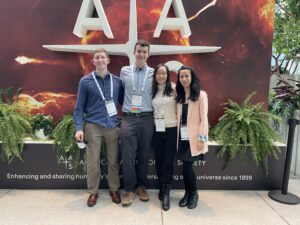
Congratulations to Kaitlyn Summey on Completing her MS Degree!
On August 30th, 2022, Kaitlyn Summey successfully defended her MS thesis in Aerospace Engineering. You can view her talk below, and a copy of her slides here. Congratulations to Kaitlyn!
SIOS Lab at the 73rd International Astronautical Congress
Grace Genszler presented a talk on her paper “Fuel-Optimal Formations for Telescope-Starshade Observatories in Lunar Space” and a poster on a mission design concept titled “HADES: A SmallSat Mission to Characterize Radio Foregrounds in the Lunar Environment” from Cornell’s SmallSat Mission Design School at this year’s 73rd International Astronautical Congress in Paris. She was one of 88 students from around the world sponsored by the International Space Education Board to attend the conference.
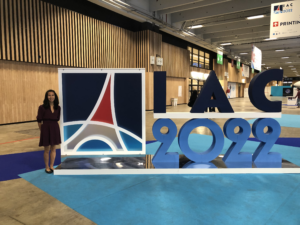
Congratulations to Rachel Oliver on Passing her A Exam
Rachel Oliver successfully passed her A exam on 8/31/2022, marking the entrance into the dissertation phase of her degree program. The presentation can be viewed below, and the slides are available here.
SIOSlab at SPIE Astronomical Telescopes + Instrumentation 2022
Zvonimir Stojanovski, Corey Spohn, and Jackson Kulik all presented posters at this year’s Astronomical Telescopes + Instrumentation SPIE meeting.
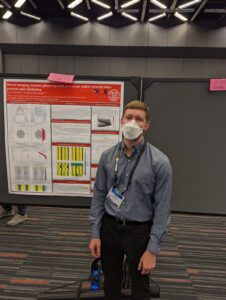
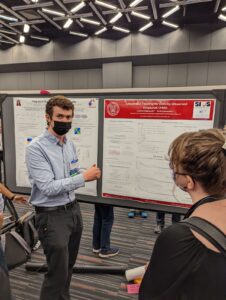
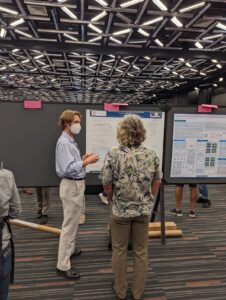
Congratulations to Jackson Kulik on Passing his A Exam
Jackson Kulik successfully passed his A exam on 08/25/2022, marking the entrance into the dissertation phase of his degree program. The presentation can be viewed below, and the slides are available here.
Astrodynamics Makes for Pretty Pictures
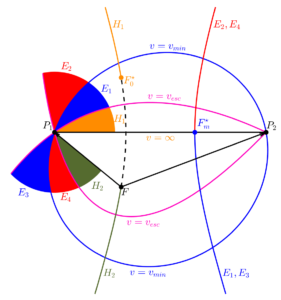 A particularly cool thing in preliminary orbit design is something called ‘Lambert’s Problem’. The problem consists of finding all of the trajectories around a central body (F) patching points P1and P2. The points are points in space, but can also be at two completely different times (in which case you have a setup that allows you to find trajectories between moving points, such as objects on two different orbits around the Earth, or interplanetary trajectories between two planets in the solar system). The very neat feature of this boundary value problem is that it has a set of solutions that can be gotten at entirely via geometric analysis. Briefly, for any given two points in space, there exists a hyperbola representing the locus of the vacant focus of the transfer trajectory (the central body is at the filled focus). The location of the vacant focus uniquely defines the transfer orbit, and can result in an infinite number of elliptical transfers (each of which actually represents two different transfers as the ellipse can be followed the short way or the long way), and infinite number of hyperbolic transfers, two unique parabolic transfers, and a unique (elliptical) minimum energy transfer, whose vacant focus lies on the line joining the two points in space. Kaplan (in his 1976 textbook) classified the families of trajectories as E1-E4 (where E1/E3 were the short/long ways on one set of ellipses and E4/E2 were the short/long ways on another set of ellipses, and H1-H2 (the two hyperbolic families). He also showed how each family corresponds to a unique branch of the hyperbola of vacant foci locations, which encodes the possible departure directions of each family. The figure to the left is directly based on one in Kaplan’s text. One limitation of this representation, however, is that it does not clearly show the bounding action of the parabolae on the long-way ellipse families. We can fix this by extending the figure and shading the entire loci of all transfers, as shown below:
A particularly cool thing in preliminary orbit design is something called ‘Lambert’s Problem’. The problem consists of finding all of the trajectories around a central body (F) patching points P1and P2. The points are points in space, but can also be at two completely different times (in which case you have a setup that allows you to find trajectories between moving points, such as objects on two different orbits around the Earth, or interplanetary trajectories between two planets in the solar system). The very neat feature of this boundary value problem is that it has a set of solutions that can be gotten at entirely via geometric analysis. Briefly, for any given two points in space, there exists a hyperbola representing the locus of the vacant focus of the transfer trajectory (the central body is at the filled focus). The location of the vacant focus uniquely defines the transfer orbit, and can result in an infinite number of elliptical transfers (each of which actually represents two different transfers as the ellipse can be followed the short way or the long way), and infinite number of hyperbolic transfers, two unique parabolic transfers, and a unique (elliptical) minimum energy transfer, whose vacant focus lies on the line joining the two points in space. Kaplan (in his 1976 textbook) classified the families of trajectories as E1-E4 (where E1/E3 were the short/long ways on one set of ellipses and E4/E2 were the short/long ways on another set of ellipses, and H1-H2 (the two hyperbolic families). He also showed how each family corresponds to a unique branch of the hyperbola of vacant foci locations, which encodes the possible departure directions of each family. The figure to the left is directly based on one in Kaplan’s text. One limitation of this representation, however, is that it does not clearly show the bounding action of the parabolae on the long-way ellipse families. We can fix this by extending the figure and shading the entire loci of all transfers, as shown below:
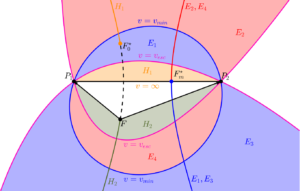
AJ Paper Published
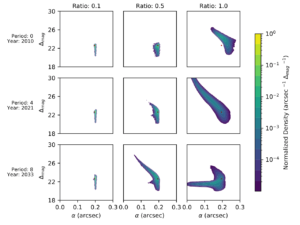
“Scheduling Direct Imaging Observations Based on Radial Velocity Orbital Fits: Best Practices for Translating Orbits and Failure Modes” by Corey Spohn, Dmitry Savransky, and Rhonda Morgan has been published in the Astronomical Journal and is available here. The paper explores how to use exoplanet orbit information from radial velocity observations to predict the exoplanet’s location in future direct imaging exoplanet detection missions.
JATIS Paper Published
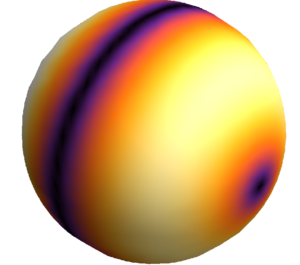 Minimal differential lateral acceleration configurations for starshade stationkeeping in exoplanet direct imaging” by Jackson Kulik, Gabe Soto, and Dmitry Savransky has been published in the Journal of Astronomical Telescopes, Instruments, and Systems. You can read the paper open access here. This paper discusses a method to identify parts of the sky which are dynamically easier for a starshade and telescope satellite pair to image.
Minimal differential lateral acceleration configurations for starshade stationkeeping in exoplanet direct imaging” by Jackson Kulik, Gabe Soto, and Dmitry Savransky has been published in the Journal of Astronomical Telescopes, Instruments, and Systems. You can read the paper open access here. This paper discusses a method to identify parts of the sky which are dynamically easier for a starshade and telescope satellite pair to image.





